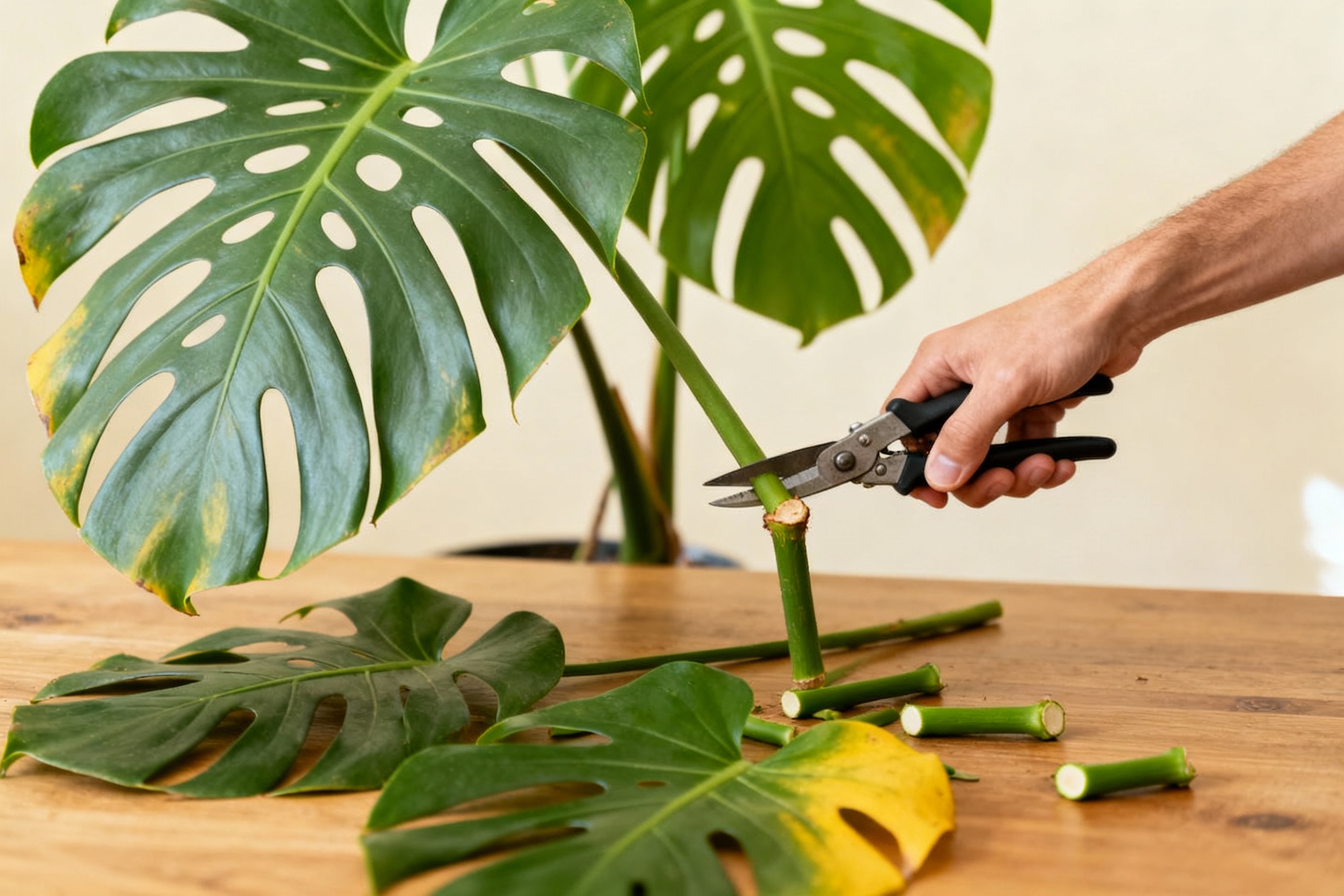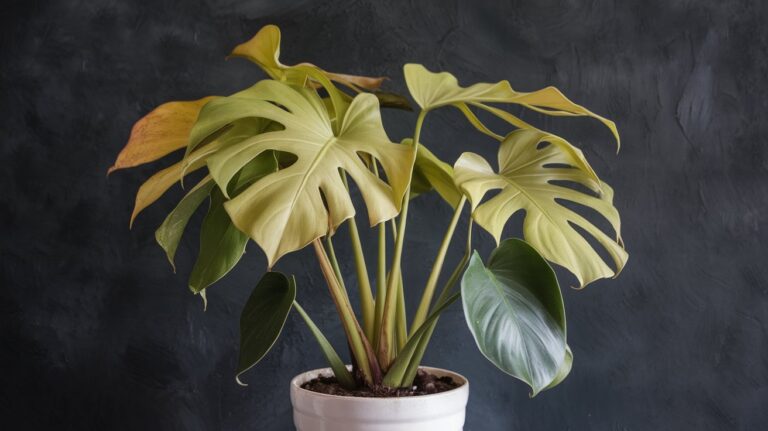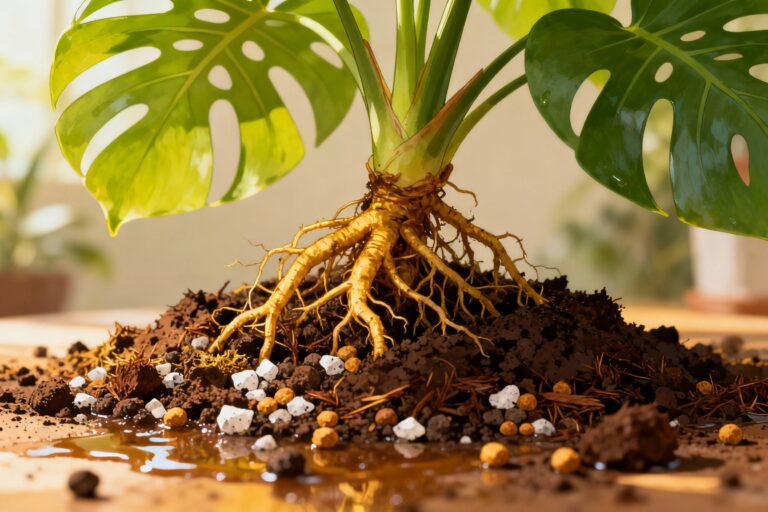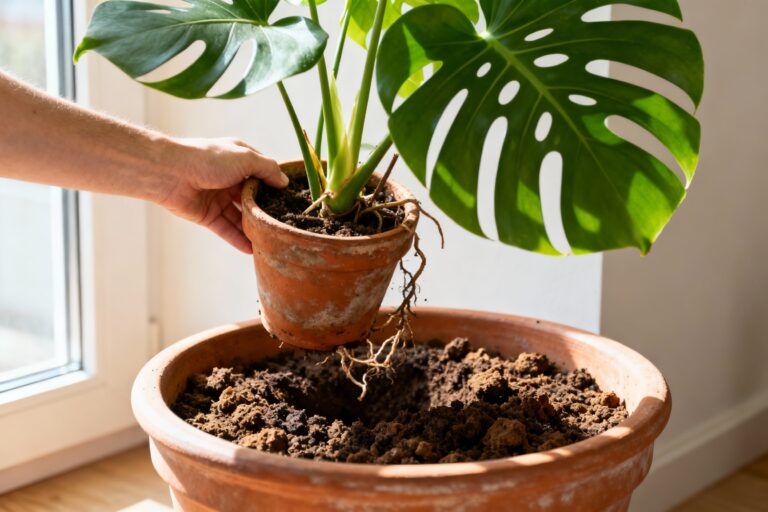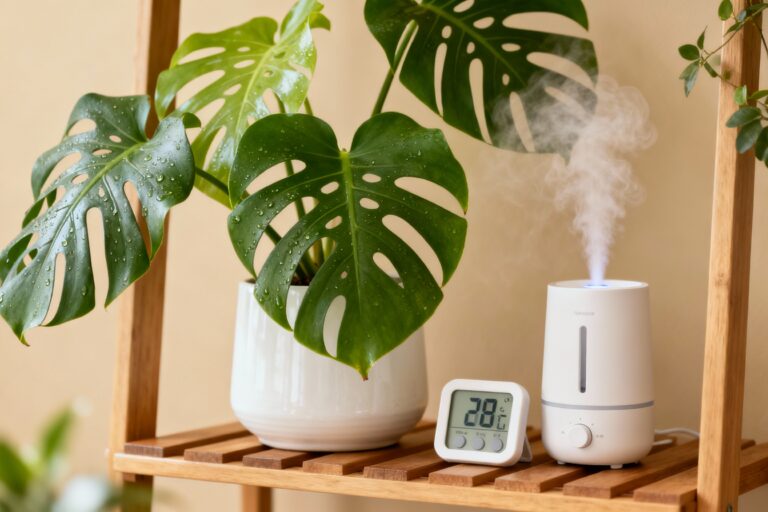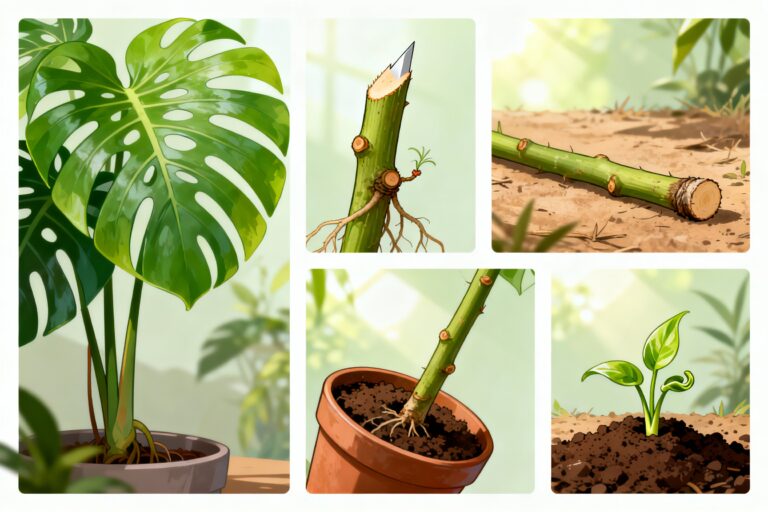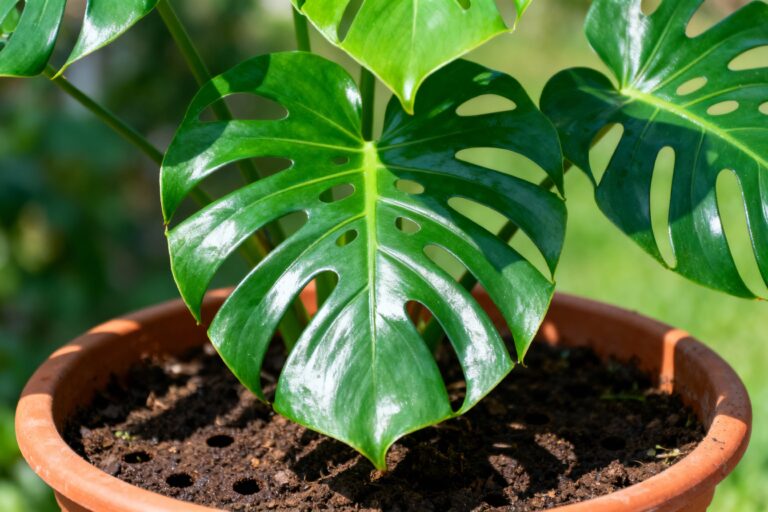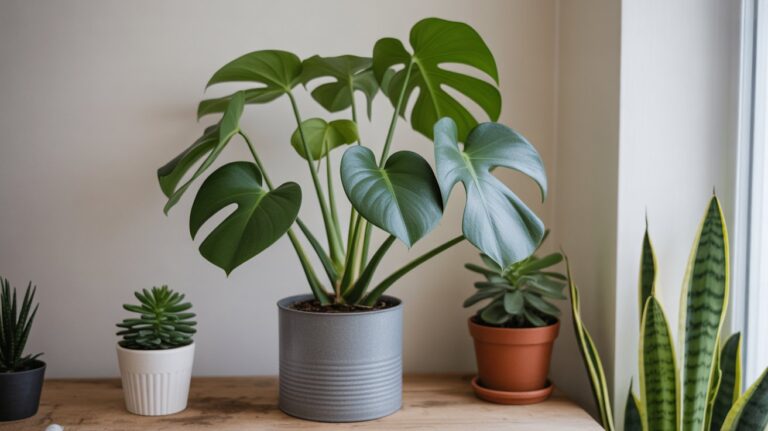Your Monstera looks gorgeous when it goes full jungle mode… until it starts creeping over your bookshelf and shading your favorite chair. Good news: pruning doesn’t just tame the chaos. It boosts growth, shapes the plant, and keeps those iconic leaves glossy and dramatic.
Let’s trim smart, not hard—and turn your Monstera into the lush, green showpiece it deserves to be.
Why Prune a Monstera at All?
Pruning does more than make your plant look tidy. It redirects energy to the healthiest leaves and stems so you get bigger, brighter foliage. You also control size, prevent legginess, and encourage new growth points.
Plus, pruning helps you remove damaged or diseased parts before they spread. Want more Monsteras? Cuttings root easily, so pruning doubles as propagation. One haircut, multiple plants—bargain.
Timing: When Your Monstera Wants a Haircut
Aim for spring to early summer.
That’s the plant’s active growth phase, so it rebounds fast and pushes out fresh leaves. You can prune lightly year-round, but avoid heavy snips in winter. The plant naps then, and you want energy, not grumpiness.
If the plant looks stressed—droopy, dehydrated, or recently repotted—wait a couple of weeks. Pruning is a mini stressor. Give it the spa day after, not during.
Tools and Setup: Keep It Clean, Keep It Sharp
Dirty shears = sad plants.
You’ll want:
- Sharp pruning shears or clean scissors
- Isopropyl alcohol or soapy water to sanitize blades
- Gloves if you have sensitive skin (Monsteras have sap that can irritate)
- Paper towels for sap and mess
Wipe the blades before you start and between cuts, especially if you remove any sick or mushy parts. Clean tools prevent disease. Boring detail, big impact.
Where to Cut: Read the Plant’s Map
Monsteras grow from nodes—those knobby points on the stem where leaves, aerial roots, and new shoots emerge. Cut above a node to encourage new growth from that spot.
Avoid slicing random mid-sections with no nodes, unless you like disappointment.
Know Your Targets
- Leggy stems: Long stems with wide gaps between leaves? Cut back to a node closer to the base.
- Damaged or yellow leaves: Remove them at the base of the petiole to free up energy.
- Overgrowth: If it’s taking over your window, shorten stems above a node to control size.
- Crowding: Trim overlapping leaves so light reaches more of the plant.
How Much Is Too Much?
As a rule, remove up to 25–30% of the plant at a time. Want a dramatic reshape?
Split it into two sessions, a month apart. Your Monstera will thank you by not sulking.
Step-by-Step: A Stress-Free Prune
Follow this plan for a clean, confident prune:
- Scout the plant: Identify leaves to remove, stems to shorten, and nodes to cut above.
- Start with the obvious: Snip dead, yellow, or crispy leaves at the base of their petioles.
- Tackle leggy stems: Cut just above a node. Leave a bit of stem above the node—don’t cut into it.
- Shape it: Step back, look at the silhouette, and trim for balance.
Keep airflow and light in mind.
- Clean sap: Dab cuts with a paper towel. Monsteras sometimes weep—same, honestly.
- Sanitize tools again: Quick wipe, future you will be grateful.
What About Aerial Roots?
Those brown, tentacle-like roots on the stems help the plant climb and drink humidity. You can:
- Guide them into the soil or onto a moss pole
- Trim them if they look chaotic—snip near the stem without harming the node
FYI, trimming aerial roots won’t hurt the plant.
They’ll likely grow back. Monsteras stay determined like that.
Shaping for That Lush, Green Look
You don’t need a botanical degree to style your Monstera. Think symmetry and light.
Encourage Bigger Fenestrations
Fenestrations (those dramatic splits) appear on mature leaves when the plant gets bright, indirect light and has something to climb.
Pair pruning with a moss pole or stake. Cut back weak, low-light growth to trigger stronger shoots.
Create Fullness at the Base
Leggy bottom? Trim tall, top-heavy stems to encourage branching lower down.
You can also plant rooted cuttings back into the pot for a fuller, bushier look. Instant volume, no extensions required.
Balance the Canopy
If one side leans into the window like it’s sunbathing, prune it back slightly and rotate the pot every couple of weeks. Even light = even growth.
IMO, rotation + consistent pruning beats chasing the sun.
Propagating Your Cuttings (Because Free Plants)
Your pruned stems can become new Monsteras if they include a node. No node, no roots—don’t @ me.
- Water method: Place the cutting in a jar with the node submerged. Change water weekly.
Plant in soil once roots hit 2–3 inches.
- Soil method: Stick the cutting into a chunky mix (potting soil + perlite + bark). Keep lightly moist and humid.
- Moss method: Wrap the node with moist sphagnum and bag it for high humidity. Root nerds love this.
Label your cuttings if you make several—yes, they all look the same after a week on your windowsill.
Aftercare: Help It Bounce Back
Pruning gives your Monstera homework.
Support recovery with:
- Bright, indirect light: No harsh sun for a few days after heavy pruning.
- Consistent moisture: Water when the top 1–2 inches of soil feel dry. Don’t drown it to “help it recover.”
- Humidity: 50–60% hits the sweet spot. Group plants or use a tray with pebbles and water.
- Fertilizer: Wait 2–3 weeks after pruning, then resume a balanced, diluted feed during growing season.
- Support: Tie stems to a pole so new growth climbs and stays sturdy.
Expect new leaves within a few weeks in spring and summer.
Winter? The plant moves slower, like the rest of us.
Common Mistakes to Avoid
- Cutting without a plan: Step back, assess, then snip. Knee-jerk pruning leads to weird shapes.
- Ignoring nodes: No node = no new growth from that stem.
- Overpruning: Stay under 30% at a time.
Your plant isn’t a hedge.
- Dirty tools: That’s how rot and disease spread. Quick wipe, big payoff.
- Wrong light: Prune and then shove it in a dark corner? You’ll get legginess again.
Light matters.
FAQ
How do I know if my Monstera needs pruning?
Look for yellow leaves, leggy stems with big gaps between leaves, or a shape that leans heavily to one side. If it’s outgrowing its space or blocking light from other plants, it’s time. Pruning keeps it vigorous and gorgeous.
Can I prune in winter?
You can remove dead or diseased parts anytime, but save big cuts for spring or summer.
The plant grows faster then and recovers quicker. In winter, it naps and won’t push fresh growth as readily, FYI.
Will pruning make my Monstera bushier?
Yes, if you cut above a node and give it good light. New growth often emerges near the cut point, which creates branching.
Pair that with a support pole and consistent care, and you’ll get that full, lush vibe.
My Monstera leaks sap after I cut it—is that normal?
Totally normal. Dab the cut with a clean paper towel and let it dry. The plant seals itself quickly.
If you have sensitive skin, wear gloves because the sap can irritate.
Should I remove leaves without fenestrations?
Not automatically. Younger leaves often lack splits. If the leaf looks healthy, keep it.
Focus on improving light and support—fenestrations follow maturity and good conditions, IMO.
Can I cut aerial roots?
Yes, if they bother you. Trim them near the stem or guide them to a pole or the soil. They help with support and humidity uptake, but the plant won’t cry if you tidy them.
Conclusion
Pruning your Monstera isn’t scary.
It’s a quick, strategic tidy that unlocks bigger leaves, better shape, and fresh, vibrant growth. Keep your tools clean, cut above nodes, and don’t go wild all at once. With a little confidence and a plan, you’ll turn your Monstera from “overgrown roommate” into “luxe living room star.”
